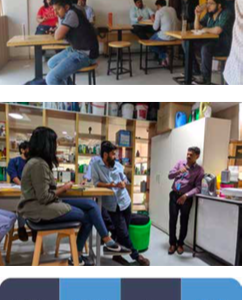With a rise in interest in entrepreneurship and small businesses, constant growth and profitability are not always guaranteed. So, how can you identify which business and product opportunities are worth investing your time and other resources into?
We’ll tell you how!
By the end of this article, we’re sure you’ll have a clearer idea about how you can pick and choose from several businesses that could be profitable to you in the long run.
But before knowing how to identify new opportunities, you must have a definite framework in mind.
This framework can include:
- Understanding your company’s business direction.
- Analyzing your strengths and weaknesses.
- Taking into account the resources you can access.
How to Identify New Product and Business Opportunities?

Product and new business opportunities can be tough to identify, we think we can all agree on that. So to help you deal with this issue, we bring to you a list of strategies you can use to uncover constructive opportunities for the future.
-
Explore your potential

Talk to potential prospects or customers that you may have lost in the past for whatever reason. Ask them why they stopped consuming your product. When you do this, you may or may not find a pattern. If you see a pattern exists, try to find the best possible solution for it.
You must also understand that even if your product currently might have a lot of demand, it’s not always the best choice if you’re looking to make a profit out of it in the long run.
-
The customer comes first!

There is no such thing as being perfect in business. With or without our knowledge, we might make some mistakes, perhaps in the way our product is made or how our services need a little upgrade. Don’t ignore customer feedback, make more efforts to get them, instead.
Customer feedback will help you figure out the flaws in your business so you can work on them and take your product or business to new heights.
-
Be nosy, if you must
What we’re referring to when we say be nosy is, keep an eye on what your competition is doing. If you haven’t already been doing so, now’s the time for you too!
Competitor analysis is easy to do and can even be done by yourself, want to know how? Let us tell you!
Here’s a list of a few questions you must keep in mind when visiting your competitors’ social media pages or even their websites:
- Why is this particular competitor growing evidently and quickly?
- What is their USP? (Unique Selling Proposition)
- Who is their target audience? And how is it different from your own?
- Who have they partnered up with in the past for their business?
Conducting a rough SWOT (Strength, Weakness, Opportunities, and Threats) analysis of their business can also greatly help you figure out what you might want to add to yours. The more often you conduct a competitor analysis, the more areas of opportunity for growth you will find for your business. Even if you’re not looking for more opportunities for new products or businesses, we still recommend you engage in competitor analysis as it can also have other benefits like helping you fine-tune your brand identity and present your USP, even more effectively.
-
Dive right into market research
We say look at the bigger picture and the bigger picture, in this case, is the market. Conducting competitor analysis and gaining insight is great, but understanding the market taking into account all the smaller factors is also essential.
Market research entails a lot of things, some of which are:
- What is the size of the market you’re looking to work for?
- Is it a constantly growing market or is it shrinking?
- What is the common target audience shared by all businesses in the market?
- Why won’t people buy certain products in this particular market?
- Who are the new competitors and how many?
-
Consider factors that can affect the market
Environmental or otherwise, businesses often get under the radar of loss when there is an extremely negative change they have to face. While some changes may be avoidable, some may also be very tough to dodge.
Some business environment factors that can have a great impact on a product or business opportunity can be divided into the following broad categories:
- Technological and Scientific developments
- Change in trade policies
- Change in government regulations
- Shifts in the economy
- Change in social and cultural norms
In Conclusion
A lot of opportunities for new business or products may present themselves when one knows how to identify the correct opportunities and make use of them to the best of their ability.
Apart from the ones stated above a few other strategies you can employ to identify potential business and product opportunities are:
- Analysis of foreign markets
- Look into similar industries
- Explore the unexplored and indirect opportunities like understanding the framework, the demand, and profitability.
Before diving headfirst into a new business or product development, make sure you consider all factors.
How can ISDI help?
Are you interested in learning more about business development and product design? Learn Strategic Design and Management to enhance your creativity and discover new business opportunities!
ISDI offers various design programs such as Fashion Design, Fashion Communication and Styling, Interior Design and Strategic Design, Communication Design, Product Design, and Management. Pursuing one of the degree programs, that is, Bachelors in Design (BDes) – 4 year program or Postgraduate In Design (PGDI) – 11 months program. Either of the programs are an alternative for a career in fashion and design.
The ISDI campus is located in the business district of Mumbai, the commercial center of India. ISDI consists of a curriculum that is based on that of the Parsons School of Design, experienced and industry-leading faculty, practical project-based training, all situated in a state-of-the-art campus. ISDI is just the right place for someone looking to start a career in design.











